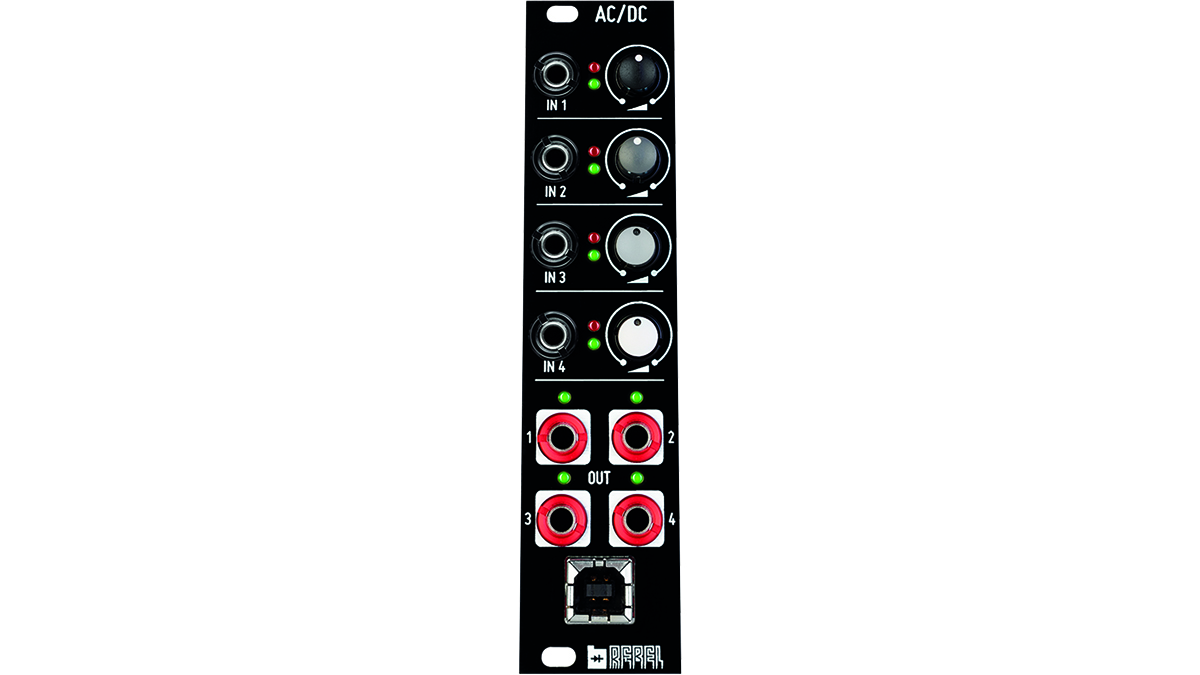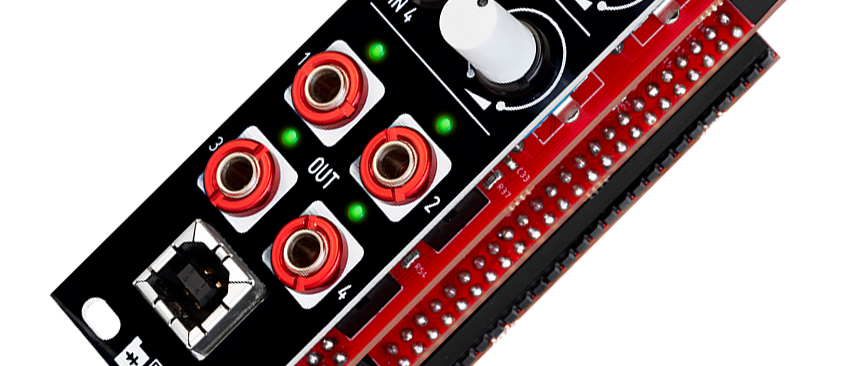MusicRadar Verdict
For everything from simple audio IO duties to more extravagant musical situations, the AC/DC really is a fine module.
Pros
- +
Takes little rig room.
- +
Intuitive workflow.
- +
Opportunities for development.
Cons
- -
Limited patching IO.
MusicRadar's got your back
Befaco AC/DC: What is it?
For every patch there is the final question; how to send the signal for output. Use a mixer then head for a desk, headphones, or speakers? Multitrack into your DAW of choice? Or both?
While there are some single module options for this, they tend toward the larger, more costly devices, which may not suit the rig or budget of all users. Befaco’s AC/DC may just be the solution for many modularists.
The module itself is pretty diminutive for the features on offer, at just 6hp. The build quality is good, although maybe not quite up there with the most robust options out there. That said, it is available as a prebuilt or a DIY module, which will give some confidence to those who are happy constructing their own gear.
The physical unit is small, neat and clear. There are four outputs and four inputs, each with a level control and clipping LEDs, making it easy to ensure levels are as required. Plus a USB type B connector for data traffic in both directions.
That’s it for the front panel, other than simple, clear labelling, something all modules should have, shirking the hieroglyphs some developers opt for. It’s plain – and some may say dull – but works.

Befaco AC/DC: Performance and verdict
The AC/DC has a few strings to its bow that really make it more than the sum of its parts. As the name suggests, it is DC-coupled, meaning it can act as a bridge to your computer, not just a way of getting audio in and out of your rig and Mac or PC.
If you use Ableton Live, you can send, via USB, modulation and sequence data in either direction, courtesy of Ableton’s CVtools. This may not be of use to all but it is worthy of consideration when appraising any IO needs for your rig.
Want all the hottest music and gear news, reviews, deals, features and more, direct to your inbox? Sign up here.
It opens up a world of possibilities for all manner of musical situations, from simple multitrack recording to using software plugins as audio processors. If a rig has limited room but a patch could do with some reverb and compression for example, the audio can be sent out to software like an effects loop.
Lastly, the AC/DC runs on the OWL platform, opening up the module to development by any user with the desire to do a bit of programming. The AC/DC OWL user community is in its infancy but expect to see keen enthusiasts sharing as time passes.
The DC coupling can’t be overestimated here, as it really does open up a lot of doors. Not just for audio processing but for the CV control mentioned earlier. For users with a favourite sequencer, be it DAW-based or as part of their Eurorack rig, it’s a godsend.
No matter the sound source, the ability is there to send patterns in either direction, combining the best of both worlds and massively increasing the power on tap. USB-C would be nice, simply as it is becoming the standard but the Type C connector is fit for purpose and can feel more secure, so not all bad.
MusicRadar verdict: For everything from simple audio IO duties to more extravagant musical situations, the AC/DC really is a fine module.
Befaco AC/DC: Hands-on demos
Befacosynth
Synth Diy Guy
sonicstate
Befaco AC/DC: Specifications
- KEY FEATURES: I/O: USB interface, 4 channels of +/-10v, Clipping LEDs, OWL platform compatible.
- CONTACT: Befaco
